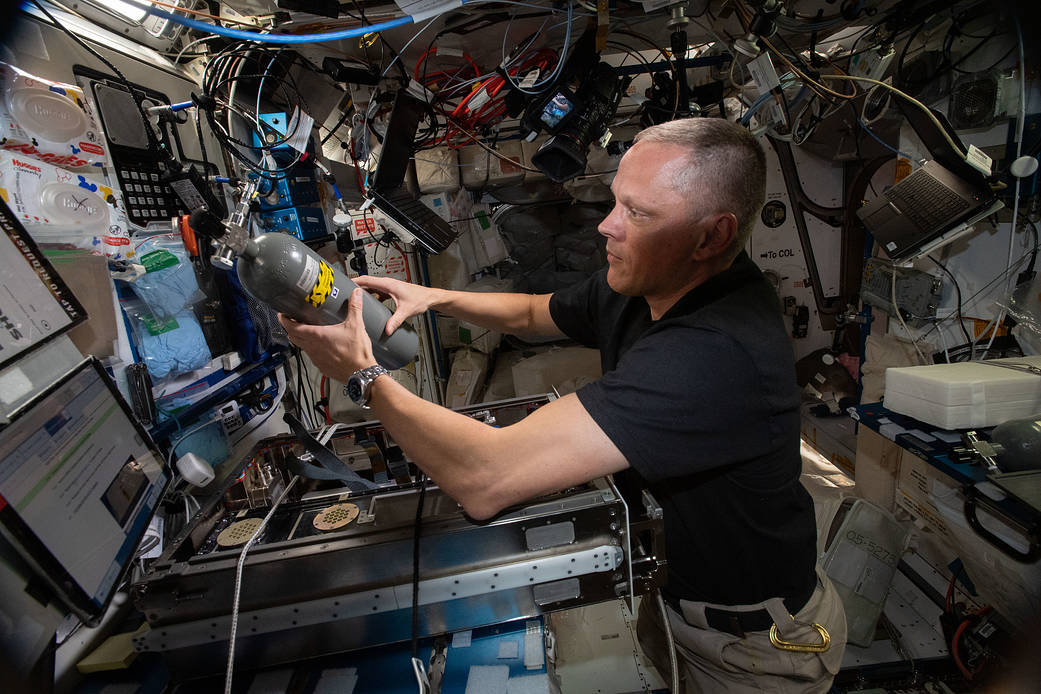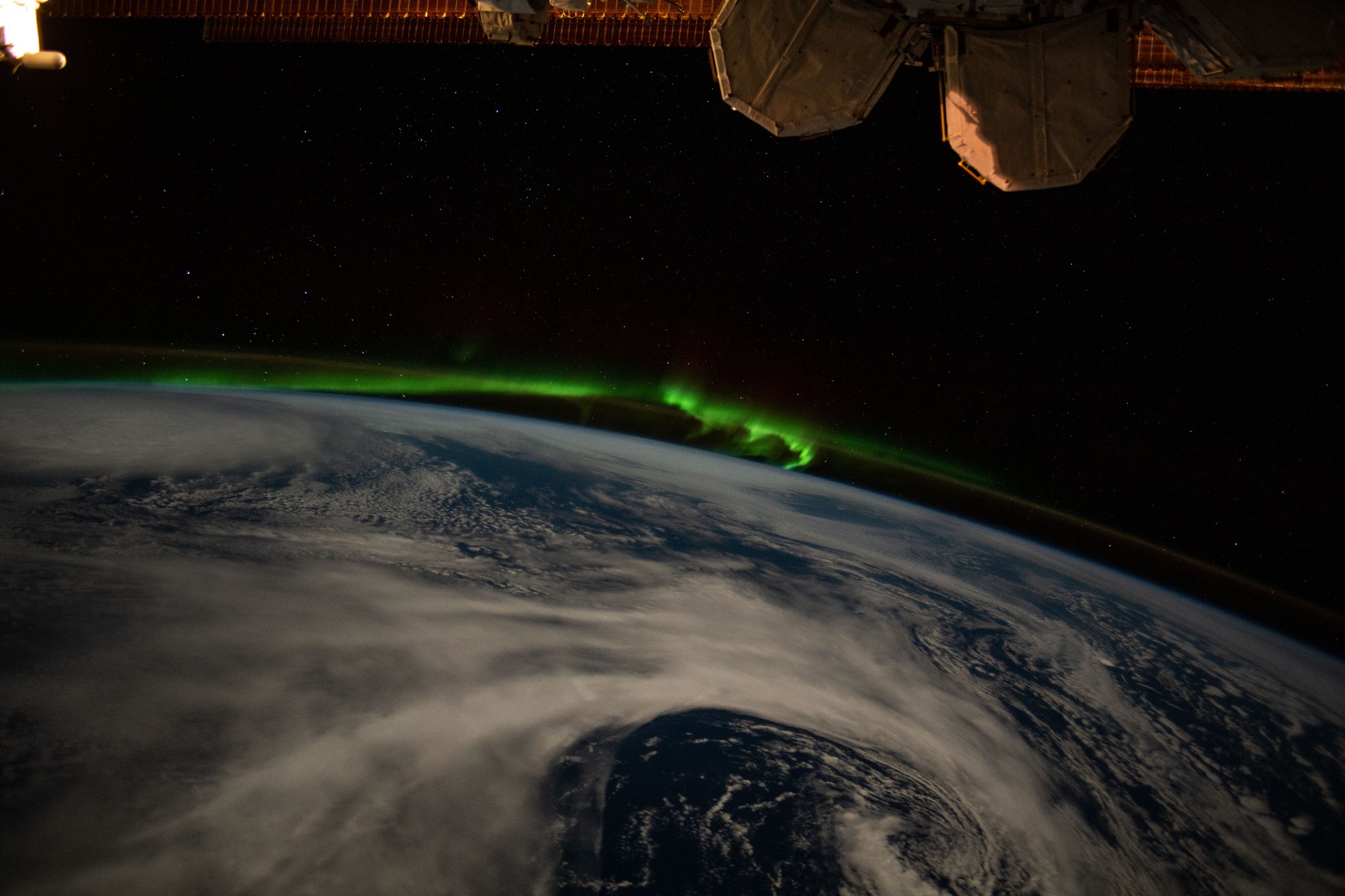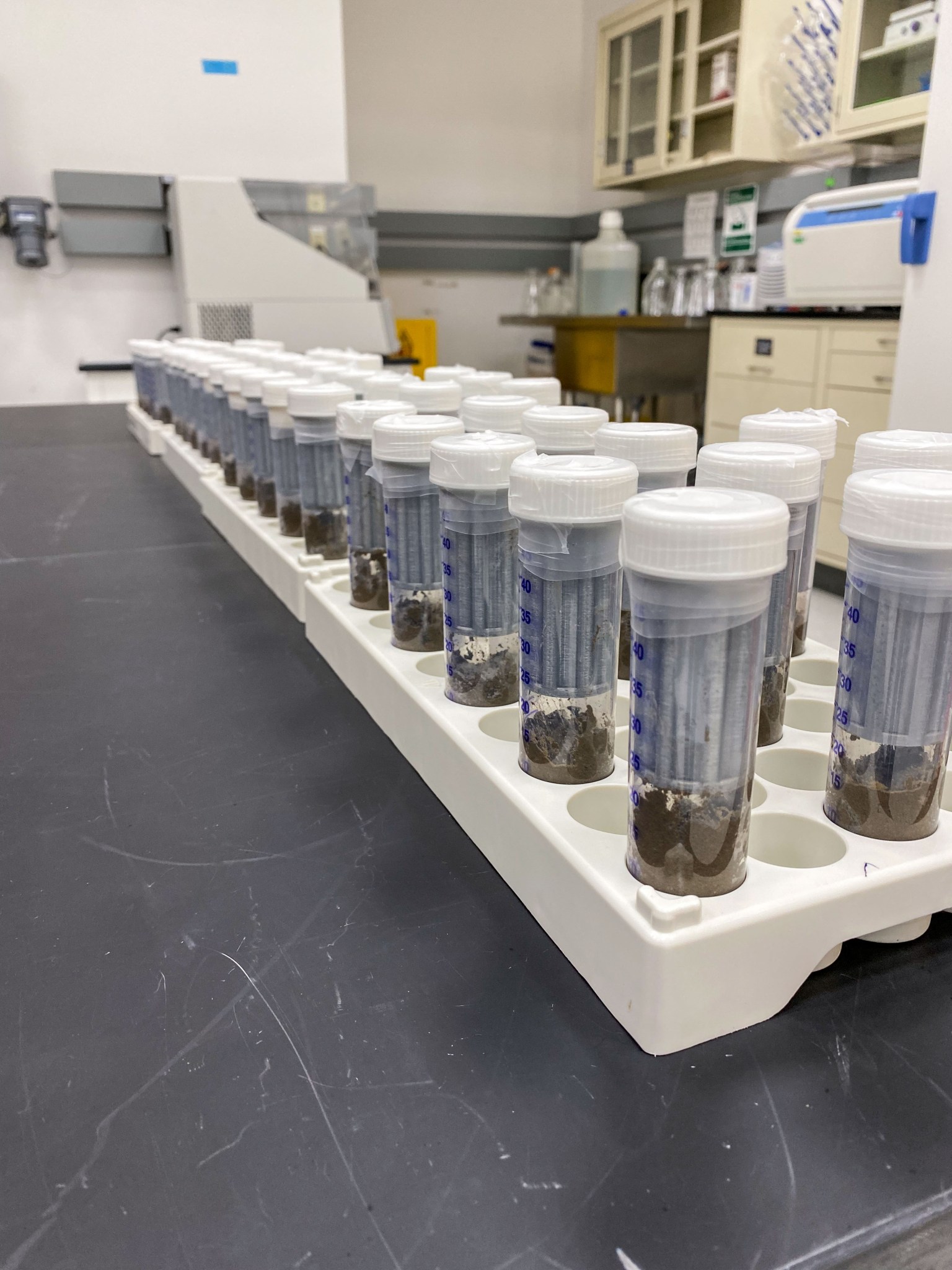Crew members aboard the International Space Station conducted scientific investigations during the week of Aug 15 that included examining soil microbial communities in space, tracking how the human body adapts to microgravity, and demonstrating a tool to test hearing in noisy environments. Crew members also prepared for the SpaceX Dragon’s 25th commercial resupply mission to return to Earth with samples and hardware from multiple investigations, enabling researchers to continue data collection and analysis on the ground.
Here are details on some of the microgravity investigations currently taking place aboard the orbiting lab:
Soil for space
DynaMoS examines how microgravity affects metabolic interactions in communities of soil microbes. On Earth, communities of microorganisms carry out key functions in soil, including cycling of carbon and other nutrients and support of plant growth. This research focuses on the communities of soil microorganisms that decompose chitin, a building material similar to cellulose that is found in the exoskeletons of insects, the cell walls of fungi, and parts of many other organisms. Results could support design of life-support systems for future space missions that use the natural processes carried out by soil microorganisms. The investigation also could contribute to efforts to optimize soil microbe communities to enhance agricultural production on Earth. The space station serves as a platform for a variety of research studying how microgravity affects microbes, including those involved in human health. Crew members processed samples for the investigation during the week.
Astronaut adaptation
Standard Measures collects data from crew members on behavioral health and performance, cellular profiles and immunology, microbiome, biochemistry markers, sensorimotor changes, and cardiovascular health. Researchers use these data, collected throughout the life of the space station, to examine how crew members adapt to living and working in space, monitor countermeasure effectiveness, and support future research on planetary missions. During the week, crew members completed questionnaires and collected samples for the investigation.
Helping with hearing
During the week, crew members collected measurements for Acoustic Diagnostics. This ESA (European Space Agency) investigation tests the hearing of crew members before, during, and after flight and compares otoacoustic emissions (OAEs), or sounds naturally generated from within the inner ear, and hearing loss from exposure to noisy environments. A noisy environment can interfere with routine hearing test results and using OAEs as the investigation technique could avoid this problem. The advanced technology developed for this project also could improve diagnostic power and reduce the time required for OAE-based tests. Such advances may encourage more widespread use of this diagnostic tool for applications in occupational health on Earth.
Other investigations involving the crew:
- BioSentinel measures the effects of radiation and microgravity on Saccharomyces cerevisiae yeast. Scientists plan to compare the effects of the space station environment on this yeast to effects from a deep space mission. Results could provide insight into potential damage accumulated from exposure to space radiation and contribute to understanding of how long-term missions to deep space may affect humans.
- XROOTS uses the Veggie facility to test hydroponic (liquid-based) and aeroponic (air-based) techniques for growing plants, potentially enabling production of crops on a larger scale for future space exploration.
- Immunosenescence studies how microgravity affects immune function during flight and whether immune cells recover post-flight. Results could support development of treatments to protect astronauts during future long-duration spaceflight, and lead to development of more effective treatments for immune system aging on Earth.
- ISS Ham Radio sessions engage students, teachers, parents, and other members of the community in direct communication with astronauts via ground-based amateur radio units. This experience helps inspire interest in science, technology, engineering, and math.
- Plasma Kristall-4 (PK-4), a collaboration between ESA and the Russian State Space Agency (Roscosmos), studies how plasma crystals form in microgravity. Results could shed light on these common phenomena in space and possibly lead to new research methods, better spacecraft designs, and improvements in industries that use plasmas on Earth.
- Ring Sheared Drop examines formation of amyloid fibrils, which create a waxy plaque in the brain and may be involved in development of some neurological diseases. Investigation results may contribute to a better understanding of these diseases and development of potential treatments.

The space station, a robust microgravity laboratory with a multitude of specialized research facilities and tools, has supported many scientific breakthroughs from investigations spanning every major scientific discipline. The ISS Benefits for Humanity 2022 publication details the expanding universe of results realized from more than 20 years of experiments conducted on the station. Access the publication and related materials online.
For daily updates, follow @ISS_Research, Space Station Research and Technology News or our Facebook. Follow ISS National Lab for information on its sponsored investigations. For opportunities to see the space station pass over your town, check out Spot the Station.
John Love, ISS Research Planning Integration Scientist
Expedition 67




























